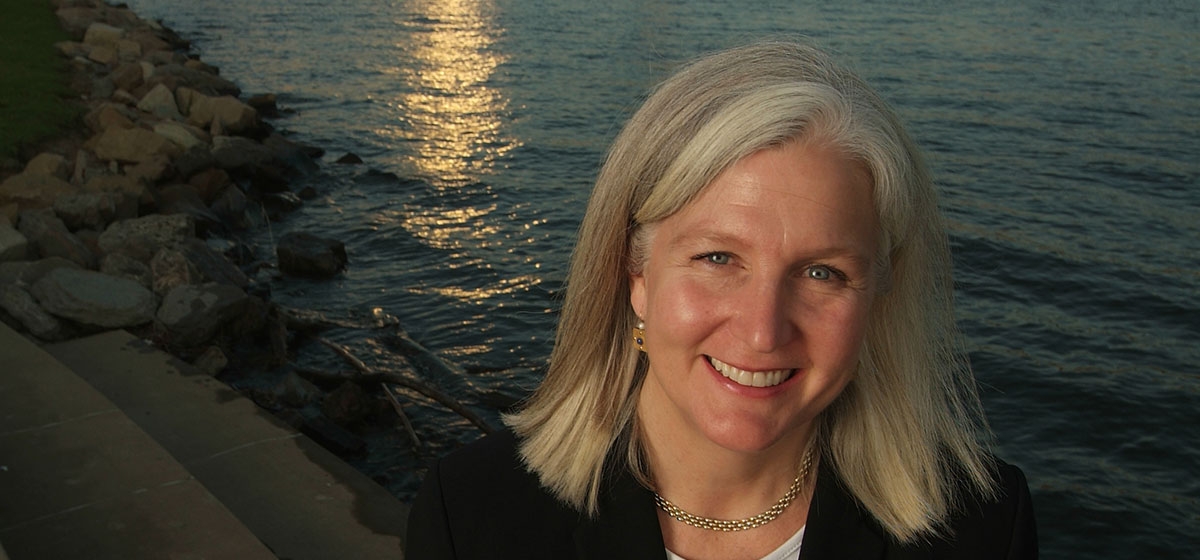
For people who know about such things, Martin Millspaugh is legend. A former Washington, D.C., journalist who specialized in covering housing and urban development issues, Millspaugh was one of the early movers behind the renewal of Baltimore’s Inner Harbor.
For some 20 years, he chaired a public-private corporation in his hometown that managed the $7 billion, 260-acre waterfront rehabilitation, creating what is widely heralded as one of the world’s most successful urban turnarounds.
Move inland a few hundred miles and north a bit, to Pittsburgh, where our own waterfront renewal initiatives are changing how we view our rivers, and meet Millspaugh’s daughter, Lisa Schroeder, executive director of Riverlife.
As much as anyone, Schroeder is front and center in the push to humanize our waterfronts and, by extension, accelerate the rebranding of Pittsburgh from smokestack to gleaming city,recognized for its handsome beauty and human scale.
“It was only recently that urban waterfronts became thought of as living space,” she says. “When I was growing up, Baltimore’s harbor was transformed from a rat-infested, rundown warehouse district into a vibrant part of the city. In the beginning, a lot of people thought my dad and his colleagues were crazy. They just kept plugging away and made it happen.”
Founded in 1999 and originally known as the Riverlife Task Force, Riverlife was the brainchild of former Pittsburgh Mayor Tom Murphy and some of the area’s best known names, including Teresa Heinz Kerry, Paul O’Neill and John G. Craig Jr., among others.
The group’s intent was and is to add to the region’s decades-long brownfields redevelopment by focusing on the rivers and shorelines. Its goal remains the creation of a seamless park system surrounding the three rivers that will beautify the urban landscape, open more access to the rivers for leisure pursuits and in so doing help tie the rivers to new development.
As the local and national economy continues to evolve from brawn to brains, it’s those quality of life assets—actually being able to use the rivers to have fun—that can make a big difference.
Sure, let’s hope Pittsburgh remains America’s largest inland port and that barge traffic forever plies our rivers; but let’s envision more kayakers and pleasure boaters out there as well.
Even the most casual of observers can see the impact Schroeder and Riverlife are having. Take a lunchtime stroll along the North Shore’s new river-hugging pedestrian walkway and see how dramatic the water can be. Downtown’s Point State Park, where the city was born of British French rivalry over the strategic river gateway, has been recontoured and upgraded, with Schroeder hosting the governor and other honchos at a ceremony over the summer. And this fall kicks off a $6 million renovation of the Mon Wharf area to create waterside open space adjacent to Downtown. Soon to come are new riverfront parks at the Convention Center and South Side Works, to name a few of the more visible projects.
Riverlife has raised $66 million for new parks and has been a catalyst or participant in some $3 billion worth of renovation projects. Most of its work is behind the scenes, Schroeder says, networking between property owners,railroads, government, community groups, local philanthropies and otherconstituencies with a stake in thewaterfront.
“My job description is pretty much, ‘cajoling, begging and pleading,’” she says.
If so, she’s good at it. Go to a local politico event, and if Schroeder is there, she’s likely to have the mayor or the county executive buttonholed for some serious tête-à-tête.
She has taken Pittsburgh’s story to a worldwide audience. She recently was the keynote speaker at a conference in Portugal and will keynote this fall at another international meeting in Naples, Italy. And she’s had her share of media coverage too, not all of it positive, including the brouhaha over the North Side’s casino garage project. Some said Riverlife was obstructionist in challenging the garage’s design.
“We wake up every day thinking about the long term and pushing for the highest and best uses along our rivers. Our strategy is to stick to the master plan and make it reality,” she says. “If we don’t speak up when that’s challenged, we wouldn’t be doing our jobs.”
That Schroeder is even in Pittsburgh, let alone at Riverlife, is the work of fate.
After her Baltimore upbringing, where her Georgia-reared mother was a refined hostess, Schroeder attended William Smith College in upstate New York.There, as a freshman, she met husband- to-be and Sewickley native Howison Schroeder. Graduation and marriage followed, as did moves as Howison earned his graduate degree at Penn State and joined an investment firm in New York City. (Howison today is CEO of O’Hara-based medical diagnostic equipment manufacturer Neuro Kinetics.)
While in Manhattan, Schroeder earned a master of science from Columbia University’s School of Architecture and Planning and cut her teeth working for the City of New York and the Port Authorityof New York and New Jersey.
After a detour to a Westchester County suburb after the children beganto arrive, Schroeder and family moved to Pittsburgh in 1990 as Howison took a financial job here. Another new job pulled them to Maine and then back to Pittsburgh in 1999.
Today, the three children are spreading their wings. First-born Liz lives in the trendy London neighborhood of Herne Hill and works for a start-up fine art online auction service. Second child Lydia,following in Mom’s footsteps, is asophomore at William Smith. And Jackis a junior at Shady Side Academy inFox Chapel.
She became acquainted with Pittsburgh’s rivers in 1999 after she met Craig, then longtime editor of the Pittsburgh Post-Gazette and an energetic believer in Pittsburgh’s potential. He gave her an assignment to research a potential eyesore garage planned for the South Side.
She did a good job on the project, and that led to an invitation to attend the Riverlife Task Force’s second organizing meeting.
During the first two years of its life,the Task Force’s executive director was on loan from a statewide environmental group. Backed with foundation money,the Task Force hired architects and urban planners, with Schroeder on board as aconsulting project manager, to develop a master plan for the region’s waterways. The group held more than 100 town meetings.
Once the master plan was published, the on-loan director left, as planned. The Task Force’s board, by then co-chaired by Craig and Heinz Endowments head Max King, considered various models from around the country, hiring Schroeder as acting managing director. Together they set out to make sure that the master plan would not sit on the shelf. In the end, they offered the permanent post to Schroeder.
“I certainly did not get involved with the expectation of becoming the executive director,” Schroeder recalls. “I was thinking this was a dream consulting job and that it would be for a certain period of time, and that would be that. But once I got involved, I saw just how groundbreaking this work is and that fundamentally we could transform the area.”
“The history of this city has always been about the rivers. Now as we change, so does how we look at them as resources.This is a long-term commitment for Pittsburgh, and we’re hoping that Riverlife will be playing an expanding role in the years ahead.”
And even as Schroeder’s ambitions for Riverlife grow, she says she tries to keep her sense of importance in check.
“I remember once in high school, I was substituting for my mother at a dinner with my father. Someone leaned across the table and asked him, ‘How are you making all this happen?’
“I’ve never forgotten his answer: ‘I have to subvert my ego to those around me.’’’
“I’m trying to do the same thing here,” Schroeder says.
Dad, no doubt, is paying attention.





